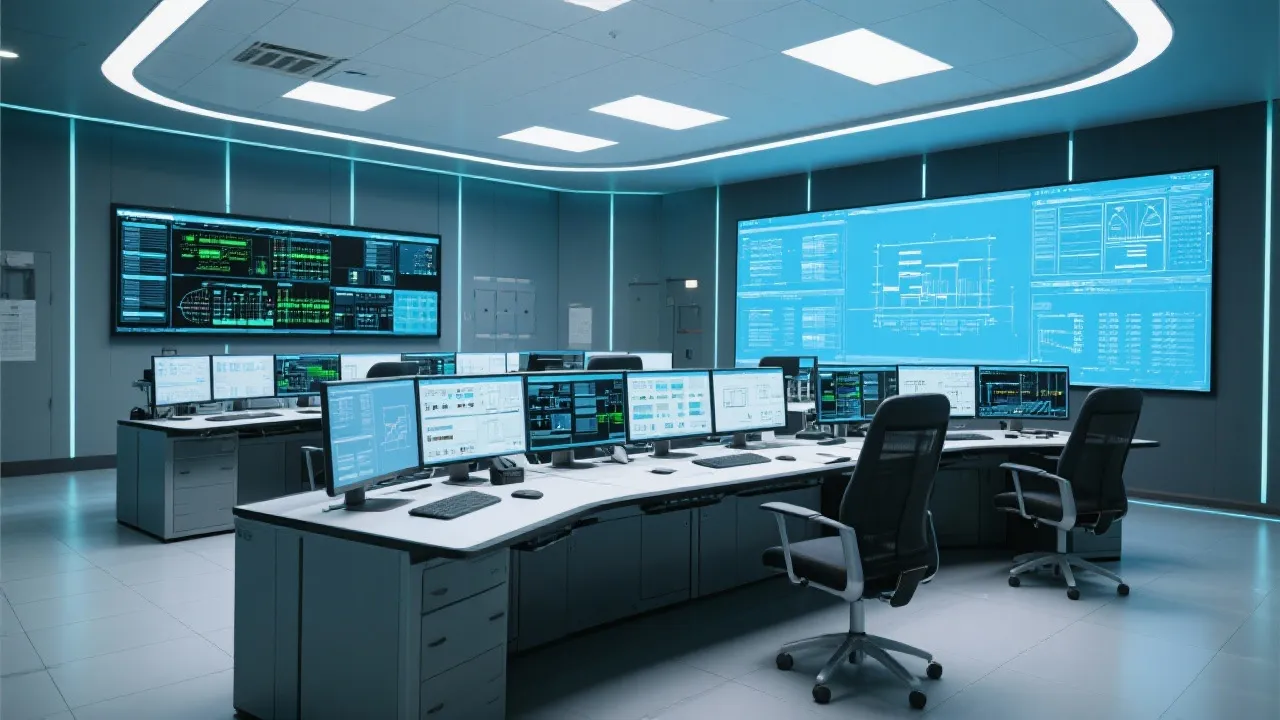This guide delves into IHm SCADA systems, pivotal in modern industrial operations for overseeing and controlling processes. SCADA, or Supervisory Control and Data Acquisition, integrates software and hardware components to monitor and manage infrastructures. This article explores their functionalities, benefits, and frequently asked questions, offering valuable insights into their operational advantages.

In the intricate world of industrial processes, IHm SCADA systems stand as crucial components in the realm of automated control systems. SCADA, short for Supervisory Control and Data Acquisition, refers to an ensemble of software and hardware solutions designed to support operators in monitoring and controlling industrial processes. While the term might be familiar to many, understanding the specifics of IHm SCADA systems and their applications is essential for those navigating modern industrial landscapes. With the ongoing evolution of technology, particularly the rise of the Internet of Things (IoT) and smart manufacturing, the role of SCADA systems has expanded significantly and now encompasses more than basic monitoring.
At its core, a SCADA system gathers information from sensors and equipment distributed across a facility, processes the collected data, and presents it to an operator or technician. This enables personnel to make informed decisions based on real-time insights. SCADA systems are integral to various sectors, including manufacturing, energy, water treatment, and more, offering enhanced visibility and control over large-scale processes. Beyond monitoring, modern SCADA systems also enable remote management, allowing operators to control processes from different geographic locations. This capability has been especially critical during the COVID-19 pandemic, when physical presence in operations was restricted.
Understanding the framework of an IHm SCADA system requires familiarity with its primary components:
The integration of SCADA systems within an industrial setting offers numerous advantages:
IHm SCADA systems find applications across various industries, demonstrating their versatility and necessity:
In manufacturing, SCADA systems enable process automation, monitoring production lines, and ensuring quality management. Companies can achieve higher production levels while maintaining standards, thanks to real-time feedback from automated sensors.
In the energy sector, SCADA systems are pivotal for managing power distribution. They monitor grid performance, detect outages, and maintain energy flow across various regions. Additionally, with the integration of renewable energy sources, SCADA systems help balance supply and demand dynamically.
Water treatment facilities utilize SCADA to ensure the efficiency of purification processes. By monitoring filtration rates and chemical dosing, SCADA systems help maintain water quality standards while allowing for responsive management of resources.
In telecommunications, SCADA systems oversee the functioning of networked infrastructures, ensuring optimal performance and reliability. The ability to monitor system health and adjust operations in real-time is crucial for service providers.
In public transportation systems, SCADA technology is employed to optimize fleet management. Operators can track vehicle movements, manage schedules, and ensure safety checks are performed, resulting in improved passenger experiences.
IHm SCADA systems are not just pivotal tools for enhancing industrial productivity; they are now essential infrastructures for embracing the future's technological advancements. By enabling accurate monitoring and optimizing processes, these systems help industries maintain competitive edges in their respective fields. Moreover, the ongoing evolution of industry demands, along with a push toward sustainability, necessitates that SCADA systems evolve accordingly, integrating innovations that will shape the future of industrial operations.
The following table provides an overview of the comparison between key components within IHm SCADA systems:
| Component | Functionality |
|---|---|
| RTUs | Data collection and transmission from remote site, essential for real-time monitoring in various environments. |
| HMI | Graphical interface for data visualization and interaction, crucial in designing user-friendly operational dashboards. |
| Communication | Network infrastructure enabling data transfer, with emerging technologies enhancing speed and reliability. |
| PLCs | Automating control functions based on data insights, increasingly integrated with IoT for smarter processing. |
While the integration of IHm SCADA systems brings numerous benefits, several challenges must also be considered:
Integrating data analytics within SCADA systems can significantly enhance operational insights and decision-making processes:
The future of IHm SCADA systems appears to be deeply intertwined with the ongoing digital transformation across industries. The necessity for smarter, more responsive systems is driving innovations that enhance the capabilities of SCADA technology:
In summary, IHm SCADA systems represent a vital component of modern industrial automation, enabling companies to optimize their processes, enhance operational efficiency, and improve safety. As industries continue to evolve and embrace new technologies, the importance of maintaining and upgrading SCADA systems cannot be overstated. The vision for the future of SCADA systems rests in their ability to integrate with emerging technologies, making real-time data and insights accessible to reinforce decision-making processes.
For today's businesses aiming for seamless operations and heightened operational control, embracing IHm SCADA systems is no longer an option but a necessity. By doing so, organizations are not only enhancing their operational capabilities but are also prepared to face the challenges of an increasingly complex industrial landscape.
Explore the Tranquil Bliss of Idyllic Rural Retreats

Ultimate Countdown: The 20 Very Legendary Gaming Consoles Ever!

Affordable Full Mouth Dental Implants Near You

Discovering Springdale Estates

Embark on Effortless Adventures: Unveiling the Top in Adventures Made Easy Outdoor Equipment

Unlock the Full Potential of Your RAM 1500: Master the Art of Efficient Towing!

Dodge Ram: Redefining the Future of Full-Size Trucks with Unmatched Power and Innovation

Get New Phones Without Plans Easily

Smart Strategies to Slash Costs on Your Roof Replacement Endeavor
